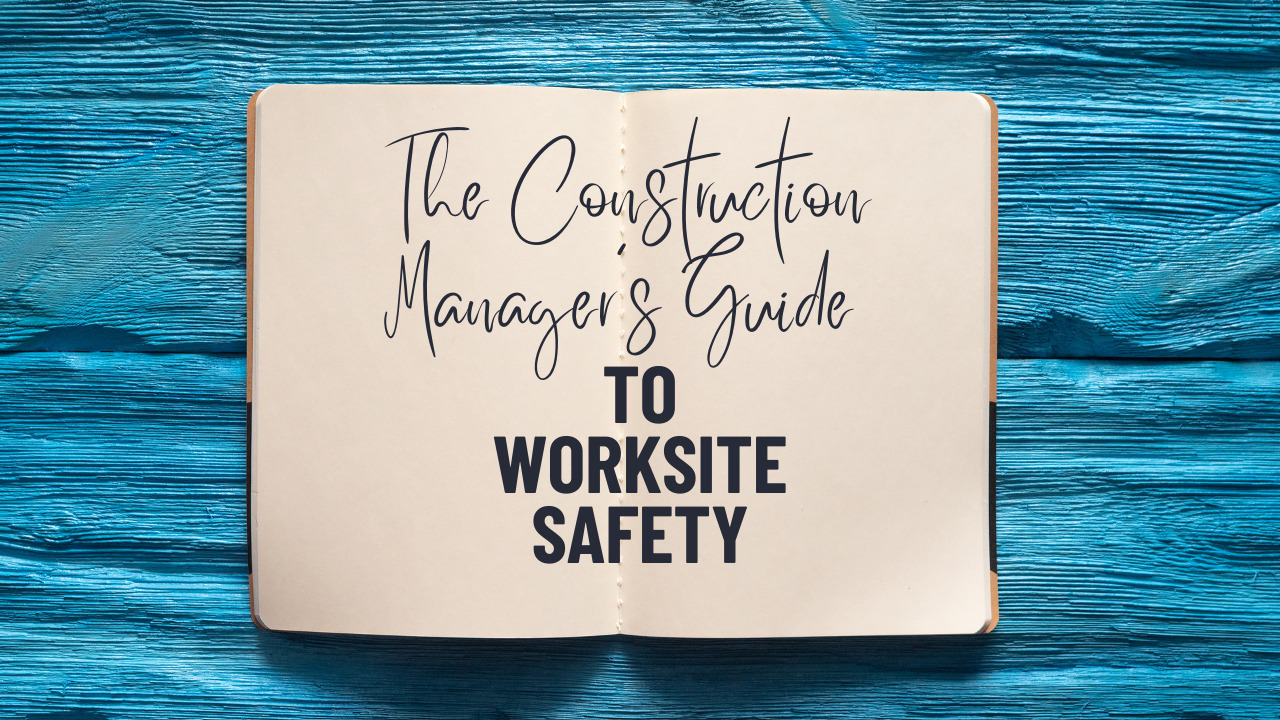Managing a construction site can be a lot of hard work. With so many different things to keep on top of and so many things in motion at any given time, it can be easy to become overwhelmed.
From monitoring vehicles coming and going to managing employees, working with contractors and dealing with suppliers, there is a never-ending list of tasks for you to keep up with and it’s important that you stay in control.
To ensure that your construction site runs like a well-oiled machine, you need to ensure that you have systems and protocols in place that will help you to keep everything in line moving forward as well as keep everyone safe and protected from potential injuries.
Construction sites are notoriously dangerous and as a construction manager, the number one priority must always be site safety.
There are countless hazards that you need to manage on a construction site and failing to have the right systems in place will put everyone at risk.
While on smaller construction sites, you might be dealing with just a handful of employees, on larger sites, you could be responsible for the safety and well-being of thousands of individuals.
Construction workers can often be working at height, at depth, with power tools, heavy goods vehicles and a range of different machinery that all have the potential to cause serious injury if they are mishandled, used incorrectly or if the wrong safety equipment is used.
As a construction manager, it is your job to minimise the risks and do everything you can to keep the construction site you are managing as safe as you possibly can.
Let’s take a look at just a few things you need to do as a construction manager to keep your worksite safe moving forward.
Table of Contents
Personal Protective Equipment (PPE)
One of the best ways to keep any construction site is to enforce the use of personal protective equipment, also known as PPE. Using PPE, the workers on site will be less likely to be injured during the course of their working day.
In addition to safety goggles, hearing protection, hard-toe boots, gloves and durable clothing, hi vis shirts should also be worn by everyone on-site to ensure that they can be seen by other workers and also by drivers moving to transport goods and equipment throughout the site.
Erect Safety Signage
To reinforce site safety protocols, it’s crucial that you have enough signage displayed throughout your construction site. Site safety signage should encourage and remind workers to wear PPE. However, it can also be used to identify hazards that may be present around the site, as well as advise drivers as to the easiest way to navigate the site safely.
Warnings should also be displayed where toxic or harmful products may be present on-site that could be harmful to workers and you can also use signage to advise visitors to check in at reception before going on to the site so you always know who is coming and going.
Use High-Quality Tools
Sub-standard tools can be dangerous on a construction site and should always be avoided. Cheaper tools are often more prone to issues that can be dangerous to those using them as well as anyone that may be in the area surrounding their use.
Choose reliable, dependable brands that have a proven track record when it comes to safety to ensure the best possible safety standards on your construction site. While cheaper tools might save you some money in the short term, an accident caused by their use could impact your reputation for many years to come.
Carry Out Regular Inspections
If you truly want your construction site to have the highest safety standards possible, you need to check in regularly to ensure that the protocols you have put in place are being followed.
Advising your team as to how to stay safe and asking them to follow safety procedures is one thing but employees actually adhering to the rules you have set in place is another.
Construction work is often very physically demanding and it’s not uncommon for workers to take shortcuts, especially as they tire towards the end of the day. Create a culture of accountability through regular inspections and you can be confident that site safety standards will reach an all-time high moving forward.
Make Worksite Safety A Priority As A Construction Manager
Regardless of the type of construction site you are managing, you need to ensure that you take worksite safety seriously. The safety of your team and visitors to the site should always be the number one priority and with the right systems in place, you can be sure that your site is always as safe as possible.
Follow the advice outlined above and you can be confident that your construction site will provide a safe environment where your team can work to the best of their abilities without putting themselves at risk.






